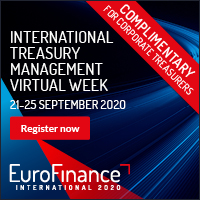What’s the Best Way to Exchange Your Currency for a Trip Abroad?
17-09-2020 | treasuryXL | XE |
Got an international trip coming up? Need to make a currency exchange? Let us talk you through your options.
When you’re preparing for an international vacation, there’s a lot you need to remember to bring. Between your passport, enough clothes, adapters, it’s easy to fill up a few bags with just the essentials. However…it’s also important that you don’t forget to bring some money to use on your trip. Odds are, if you’re traveling internationally, you’ll need to make payments in a different currency. What’s the best way to get the money? When should you make the currency exchange?
You have a few different options for exchanging your currency. We’re going to run through your options and let you know what the best option is and what you should do your best to avoid.
4. Using ATMs and card payments
Technically, you don’t need to make any currency exchanges. If it comes down to it, you can just go to an ATM or use a debit or credit card to make your payments. But while this option might sound like the most convenient one (at least as far as your time is concerned), it’s far from the best option.
When you visit ATMs or use your card to make payments in another country (and currency), you’re going to be subjected to numerous service fees and transaction fees each time you withdraw cash or swipe your card. If you’re there for a short time and only plan on making one or two payments that might not be so bad, but if you’re planning on making numerous purchases, these fees can and will add up—fast.
3. Exchanging in person at your destination
Another common option is waiting until you enter the country, and exchanging your currency there. People typically do this at the airport or at a local bank or currency exchange store.
While this method will let you avoid the high transaction fees, it unfortunately will not protect you from unfavorable rates of exchange. These providers are free to set their own rates, and it is very likely (especially if you’re exchanging at an airport kiosk) that the rates will give you much less for your money than if you transfer elsewhere.
And from a peace of mind perspective, wouldn’t it be nice to have your money taken care of before your arrival? That way, once you arrive, you’re free to start exploring or take a rest, without having to worry about getting money on top of wrangling your luggage and figuring out how to get to your lodgings.
2. Exchanging at the bank before your trip
As we mentioned in the previous section, it’s always nice to have your currency exchange taken care of before you reach your destination. It’s one less item to have on your to-do list when you arrive, and then if something happens upon arrival, you’ll already have the money that you need.
While banks are reliable, easily accessible, and can facilitate a currency exchange for you, they still aren’t the best option. While their rates will be better than those of airport kiosks, banks still come with a few drawbacks—namely, limited working hours, unfavorable exchange rates, and transaction fees.
So where does that leave us? Well…
1. Using money transfer to get currency before your trip
We promise we’re not biased—this really is the best option. Using an online money transfer service to exchange your currency before your trip will allow you to:
-
Avoid transaction and payment fees
-
Trust you’ll get a fair exchange rate
-
Take care of your currency exchange quickly and from your own home
-
Let you relax knowing that your currency exchange has already been handled.
It’s quick and easy to make an online money transfer. You don’t need to find a physical storefront and worry about business hours—you can initiate one on the go, 24/7, 365 days a year.
Get in touch with XE.com
About XE.com
XE can help safeguard your profit margins and improve cashflow through quantifying the FX risk you face and implementing unique strategies to mitigate it. XE Business Solutions provides a comprehensive range of currency services and products to help businesses access competitive rates with greater control.
Deciding when to make an international payment and at what rate can be critical. XE Business Solutions work with businesses to protect bottom-line from exchange rate fluctuations, while the currency experts and risk management specialists act as eyes and ears in the market to protect your profits from the world’s volatile currency markets.
Your company money is safe with XE, their NASDAQ listed parent company, Euronet Worldwide Inc., has a multi billion-dollar market capitalization, and an investment grade credit rating. With offices in the UK, Canada, Europe, APAC and North America they have a truly global coverage.
Are you curious to know more about XE?
Maurits Houthoff, senior business development manager at XE.com, is always in for a cup of coffee, mail or call to provide you detailed information.
Visit XE.com
Visit XE partner page











